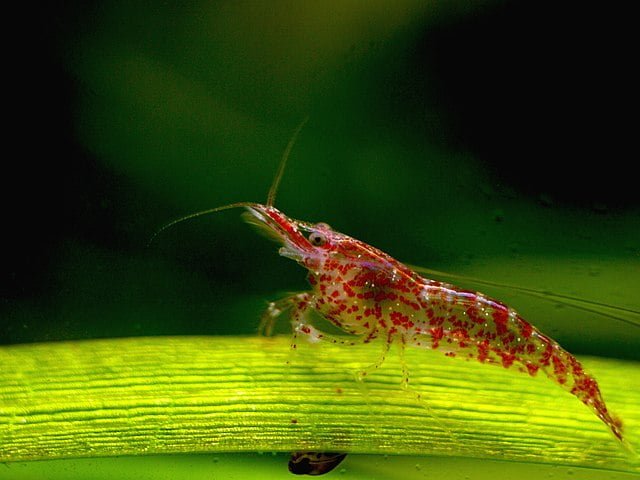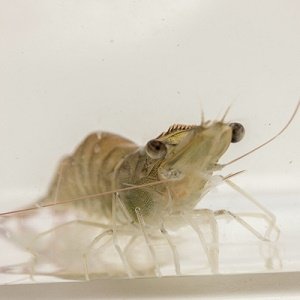
A key challenge in the aquaculture industry is ensuring optimal growth and survival of larval stages, particularly during the critical initial feeding period. Zooplankton has long been recognized as a valuable food source for fish and shrimp larvae due to its high nutritional value and digestibility.
Enrichment methods have been developed to manipulate the nutritional composition of zooplankton, meeting the specific requirements of larvae. Scientists from Universiti Malaysia Terengganu and Nagasaki University published a scientific review exploring the importance of zooplankton enrichment in aquaculture, highlighting its benefits, challenges, and future directions.
The Importance of Zooplankton as Live Feed
Zooplankton plays a vital role in aquaculture, particularly during the early life stages of fish, mollusks, and crustaceans. These tiny organisms serve as a natural and nutritious food source for larvae and juveniles, providing essential nutrients such as proteins, lipids, and micronutrients.
Although zooplankton offers a valuable food source, it often lacks certain essential nutrients, such as highly unsaturated fatty acids (HUFA) like docosahexaenoic acid (DHA) and eicosapentaenoic acid (EPA). These nutrients are crucial for the growth, survival, and overall health of aquatic organisms.
The Importance of Enrichment
Fish and shrimp larvae require balanced, protein-rich diets during the early feeding phase. Enrichment methods play a crucial role in enhancing the nutritional value of zooplankton, which can be further improved through the addition of vital nutrients and probiotics. These enhancements directly impact the well-being of cultured organisms, promoting healthy growth and development.
Recent Advances in Zooplankton Enrichment
Recent studies have focused on techniques to enrich zooplankton with vital nutrients and probiotics. These advancements have significantly improved the nutritional value of zooplankton, enhancing its ability to support the growth and development of fish and shrimp larvae. Probiotic incorporation has proven particularly promising in promoting a healthy gut microbiome, which is essential for optimal larval development.
Key findings from the study include:
- Macronutrient Enrichment: Enrichment with proteins, lipids, and fatty acids meets the nutritional needs of fish larvae, improving growth, survival, and stress tolerance.
- Micronutrient Enrichment: Vitamins C and E, selenium, and zinc are essential for fish and crustacean health.
- Probiotic Enrichment: Beneficial microorganisms can enhance zooplankton’s nutritional value and support aquatic organism health and growth.
- Fermentation Techniques: Fermentation of diets increases microbial activity, benefiting both zooplankton and fish growth.
- Thraustochytrids as a Nutritional Source: These heterotrophic protists enrich zooplankton, particularly as a DHA source, improving larval fish and shrimp growth and survival.
- Reducing Antibiotic Dependence: The use of probiotics and thraustochytrids minimizes antibiotic reliance, fostering a more sustainable aquaculture industry.
Benefits of Zooplankton Enrichment
Enriching zooplankton offers numerous advantages:
Stay Always Informed
Join our communities to instantly receive the most important news, reports, and analysis from the aquaculture industry.
- Enhanced Larval Growth and Survival: Enriched zooplankton significantly improves fish and shrimp larvae growth and survival rates.
- Improved Disease Resistance: Properly nourished larvae are more resilient to diseases and infections.
- Reduced Dependence on Artificial Diets: Providing a natural, highly nutritious food source lowers reliance on costly artificial feeds.
- Better Feed Conversion Efficiency: Enriched zooplankton optimizes biomass conversion in fish and shrimp.
Challenges and Future Directions
Despite its many advantages, zooplankton enrichment faces several challenges:
- Consistency and Reproducibility: Maintaining consistent nutrient levels in enriched zooplankton is challenging.
- Cost-Effectiveness: Enrichment costs can be significant, especially for large-scale aquaculture operations.
- Environmental Impact: Certain enrichment products may have environmental consequences.
Future research should focus on developing more efficient and sustainable enrichment techniques. Exploring alternative natural nutrient sources for zooplankton enrichment could help reduce costs and environmental impacts.
Conclusion
In conclusion, zooplankton enrichment has emerged as a critical component of sustainable aquaculture. By examining the latest advancements in this field, we can better understand the techniques and protocols that enhance zooplankton’s nutritional value. As the aquaculture industry continues to evolve, prioritizing sustainable and environmentally friendly practices is essential. Doing so will ensure a healthy and productive future for the global aquaculture sector.
Contact
Nadiah W. Rasdia
Faculty of Fisheries and Food Science, Universiti Malaysia Terengganu
Kuala Terengganu, Malaysia
Email: nadiah.rasdi@umt.edu.my
Reference (open access)
Ashaari, A., Iehata, S., Kim, H. J., & Rasdi, N. W. (2024). Recent advancement of zooplankton enriched with nutrients and probiotic isolates from aquaculture systems: a review. Journal of Applied Animal Research, 52(1). https://doi.org/10.1080/09712119.2024.2417052
Editor at the digital magazine AquaHoy. He holds a degree in Aquaculture Biology from the National University of Santa (UNS) and a Master’s degree in Science and Innovation Management from the Polytechnic University of Valencia, with postgraduate diplomas in Business Innovation and Innovation Management. He possesses extensive experience in the aquaculture and fisheries sector, having led the Fisheries Innovation Unit of the National Program for Innovation in Fisheries and Aquaculture (PNIPA). He has served as a senior consultant in technology watch, an innovation project formulator and advisor, and a lecturer at UNS. He is a member of the Peruvian College of Biologists and was recognized by the World Aquaculture Society (WAS) in 2016 for his contribution to aquaculture.




